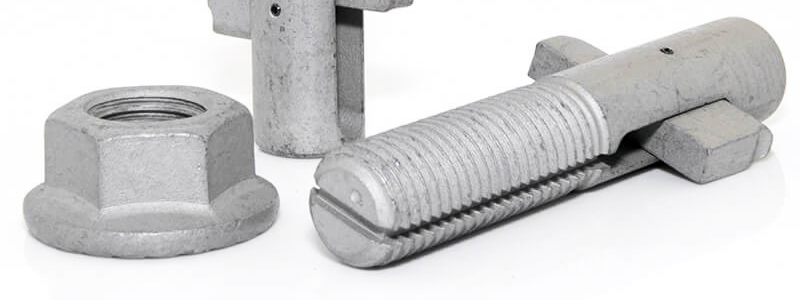Blind Bolts Vs Fang Bolts
Blindbolt UK | 29th June 2021

Blind Bolt Fasteners
There are many types of fasteners used in the world today, and while used in a variety of different ways, the purpose of a fastener remains the same: To join (or fasten) two or more objects together.
Within this article, we are going to look at two particular types of fasteners: Blind bolts and Fang bolts.
Blind Bolts; What Are They?

Blind bolts are an effective structural steel fastener and deliver both strength and adaptability, which is why they're commonly used today. Blind bolts have been developed to forge strong connections that other fastener types can't handle, such as hex bolts and rivets that have some limitations.
As fasteners, blind bolts have been used in manufacturing for decades, and offer versatility through the various sizes and designs they come in. They are known as blind fasteners for one simple reason: They can be installed from one side through a pre-drilled hole, without the need to access the other side to complete the join. This makes them ideal for connecting girder cavities and bridge constructions.
A typical blind bolt is made up of three components: A steel pin, a collar, and a sleeve. Blind Bolt fasteners can be installed using a special blind bolt tool that operates in much the same way as a riveter. They're easy to install without a lot of training, although it's still necessary to choose the right blind bolt for the job at hand. While they can make stronger joints,
it's important that you choose the right fastener for the application in question. Tensile strength and corrosion resistance are just some of the factors that need to be taken into consideration when choosing the right blind bolt, although the same applies to any other type of structural fastener, including the fang bolt.
Benefits of Using Blind Bolts on The Rail Industry
A number of different fasteners are used within rail construction, and these include blind bolts. They have become the top fastening choice within the UK rail industry because they offer a reliable high-performance fixing solution when installing AWS (automatic warning system) units onto steel sleepers. Safety is paramount within the rail industry and blind bolt fasteners meet every expectation when considering safety standards within rail construction.
As you can see in our article on blind bolts and the transportation industry, blind bolts can easily fit AWS (automatic warning systems) units onto steel sleepers within the construction process. They’ve been used for this purpose on rail systems throughout the UK, and this is because of their reliability, super strength, and ease in which they can be installed. They enable construction tasks to be carried out in a quick and efficient manner, which is necessary in this day and age when passengers expect little disruption when using their local rail networks.
What Are Fang Bolts?

Fang bolts can be used in several different capacities, most commonly when attaching ironwork to wood. They are so-called because the head of the bolt has a fanged design, which is used for biting into the timber.
Fang bolts are also known as 'rail anchor bolts,' which is why they're commonly used in the rail industry. However, they aren't to be confused with blind bolts as their purpose is very different.
Benefits of Using Fang Bolts in The Rail Industry
Fang bolts are commonly used in the rail industry because of their unique fanged design which is ideal for gripping onto the lower surface of the sleeper. When inserted, the entire assembly is unable to shift or move in any direction, as the design of the fang bolt is resistant to the heavy movements associated with trains weighing several tons. Fang bolts are far more reliable than the screws and spikes that are often used for fastening, and as such, are placed in more delicate positions, such as on pieces of track where there are sharp twists and turns.
Blind Bolts Vs Fang Bolts
Both types of bolts can be used in rail construction and they each have their own specific uses. As discussed, blind bolts are especially suited to AWS systems due to their safety and durability, and fang bolts are designed for areas of the track where heavy vibrations are common. However, they also share similar traits, with strength and reliability being two aspects that are attributed to each. It’s little wonder that both are now commonly used in the rail industry, for several purposes, including those that we have described here.
Bolted Shut
Don’t wait, take the next step today by checking out our guide, ‘What Is A Blind Bolt and What Is It Used For’, by clicking here. Alternatively, you can contact our team by using our quick and easy contact form below. You can get in touch and speak to a member of the BlindBolt team today on +44 (01299) 272 955 or by emailing us at enquiries@blindbolt.co.uk. We look forward to hearing from you.